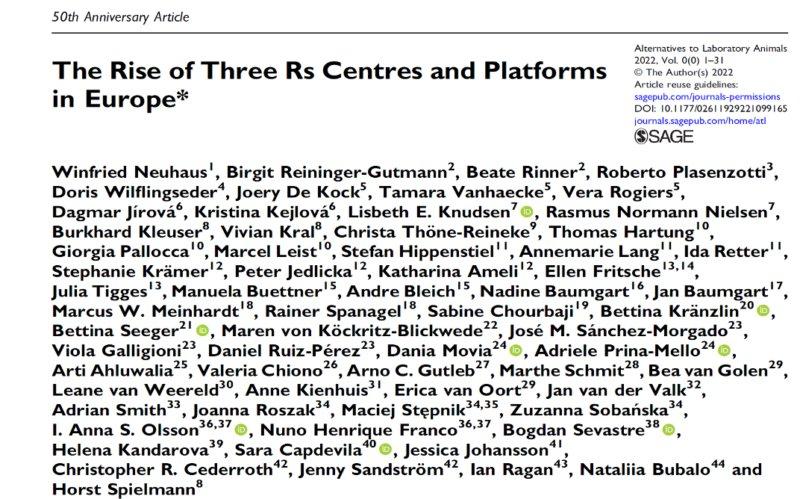- Centro Interuniversitario per la Promozione dei Principi delle 3R nella Didattica e nella Ricerca
The Rise of Three Rs Centres and Platforms in Europe

Public awareness and discussion about animal experiments and replacement methods has greatly increased in recent years. The term ‘the Three Rs’, which stands for the Replacement, Reduction and Refinement of animal experiments, is inseparably linked in this context. A common goal within the Three Rs scientific community is to develop predictive non-animal models and to better integrate all available data from in vitro, in silico and omics technologies into regulatory decision-making processes regarding, for example, the toxicity of chemicals, drugs or food ingredients. In addition, it is a general concern to implement (human) non-animal methods in basic research. Toward these efforts, there has been an ever-increasing number of Three Rs centres and platforms established over recent years — not only to develop novel methods, but also to disseminate knowledge and help to implement the Three Rs principles in policies and education. The adoption of Directive 2010/63/EU on the protection of animals used for scientific purposes gave a strong impetus to the creation of Three Rs initiatives, in the form of centres and platforms. As the first of a series of papers, this article gives an overview of the European Three Rs centres and platforms, and their historical development. The subsequent articles, to be published over the course of ATLA’s 50th Anniversary year, will summarise the current focus and tasks as well as the future and the plans of the Three Rs centres and platforms. The Three Rs centres and platforms are very important points of contact and play an immense role in their respective countries as ‘on the ground’ facilitators of Directive 2010/63/EU. They are also invaluable for the widespread dissemination of information and for promoting implementation of the Three Rs in general.




